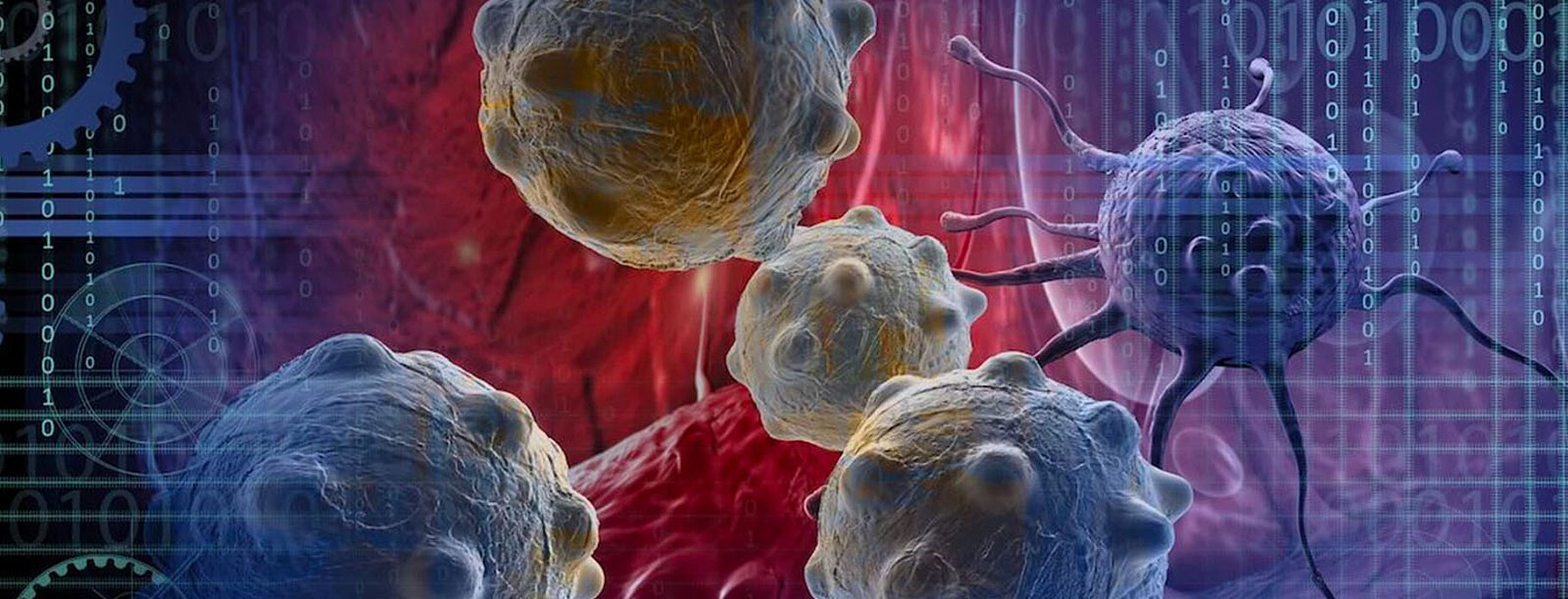
Biologie structurale de cibles épigénétiques
Biologie structurale de cibles épigénétiques
La structure de la chromatine constitue une barrière majeure à tous les mécanismes internes au noyau, et sa modulation est essentielle à une croissance cellulaire correcte. On dispose à présent d’éléments montrant clairement que des défauts de la modulation de la chromatine sont à l’origine d’une grande variété de pathologies, notamment des cancers. La configuration de la chromatine est fortement soumise aux modifications épigénétiques, qui agissent en synergie avec des facteurs de remodelage ATP-dépendants, des histones variantes et des chaperons d’histones pour réguler les mécanismes moléculaires. En combinant des techniques biochimiques et cristallographiques de pointe, nous cherchons à comprendre le remodelage de la chromatine à l’échelle moléculaire. Notre recherche porte principalement sur trois cibles : les protéine arginine méthyltransférases (PRMT), les chaperons d’histones et les histones désacétylases (HDAC). De plus, nous développons des approches rationnelles basées sur les structures pour caractériser les médiateurs moléculaires des activités biologiques de nos cibles, car elles sont souvent impliquées dans les maladies humaines. Notre équipe participe en outre à des recherches collaboratives sur plusieurs projets liés, qui exigent notre expertise spécifique. Les collaborations présentes portent sur les études structurales des complexes de cibles liées au cancer, telles que la Translationally Controlled Tumor Protein (TCTP) et l’ARNm de l’histone H4 humaine.
Membres
Chercheur(euse)s
Ingénieur(eure)s
Publications
-
2022
-
Turning Nonselective Inhibitors of Type I Protein Arginine Methyltransferases into Potent and Selective Inhibitors of Protein Arginine Methyltransferase 4 through a Deconstruction-Reconstruction and Fragment-Growing Approach
- Giulia Iannelli
- Ciro Milite
- Nils Marechal
- Vincent Cura
- Luc Bonnefond
- Nathalie Troffer-Charlier
- Alessandra Feoli
- Donatella Rescigno
- Yalong Wang
- Alessandra Cipriano
- Monica Viviano
- Mark Bedford
- Jean Cavarelli
- Sabrina Castellano
- Gianluca Sbardella
Journal of Medicinal Chemistry ; Volume: 65 ; Page: 11574-11606
-
Insect Cells-Baculovirus System for the Production of Difficult to Express Proteins: From Expression Screening for Soluble Constructs to Protein Quality Control
- Simon Pichard
- Nathalie Troffer-Charlier
- Isabelle Kolb-Cheynel
- Pierre Poussin-Courmontagne
- Wassim Abdulrahman
- Catherine Birck
- Vincent Cura
- A. Poterszman
Insoluble Proteins ; Volume: 2406 ; Page: 281-317
-
HR-Bac, a toolbox based on homologous recombination for expression, screening and production of multiprotein complexes using the baculovirus expression system
- Olga Kolesnikova
- Amélie Zachayus
- Simon Pichard
- Judit Osz
- Natacha Rochel
- Paola Rossolillo
- Isabelle Kolb-Cheynel
- Nathalie Troffer-Charlier
- Emmanuel Compe
- Olivier Bensaude
- Imre Berger
- Arnaud Poterszman
Scientific Reports ; Volume: 12 ; Page: 2030
-
-
2021
-
Structure, Activity and Function of the PRMT2 Protein Arginine Methyltransferase
- Vincent Cura
- Jean Cavarelli
Life ; Volume: 11 ; Page: 1263
-
-
2020
-
FFAT motif phosphorylation controls formation and lipid transfer function of inter‐organelle contacts
- Thomas Di Mattia
- Arthur Martinet
- Souade Ikhlef
- Alastair G Mcewen
- Yves Nominé
- Corinne Wendling
- Pierre Poussin‐courmontagne
- Laetitia Voilquin
- Pascal Eberling
- Frank Ruffenach
- Jean Cavarelli
- John Slee
- Timothy P Levine
- Guillaume Drin
- Catherine Tomasetto
- Fabien Alpy
EMBO Journal ; Volume: 39
-
Aminobenzosuberone derivatives as PfA-M1 inhibitors: Molecular recognition and antiplasmodial evaluation
- Emmanuel Salomon
- Marjorie Schmitt
- Elisabeth Mouray
- Alastair G Mcewen
- Lotfi Bounaadja
- Morgan Torchy
- Pierre Poussin-Courmontagne
- Sarah Alavi
- Céline Tarnus
- Jean Cavarelli
- Isabelle Florent
- Sebastien Albrecht
Bioorganic Chemistry ; Volume: 98 ; Page: 103750
-
-
2018
-
Role of the SMN complex and the methylosome in selenoprotein mRNP assembly and translation
- Anne-Sophie Gribling-Burrer
- Hassan Hayek
- Vincent Cura
- Martine Barkats
- Jean Cavarelli
- Séverine Massenet
- Franck Martin
- Gilbert Eriani
- Christine Allmang
-
Hijacking DNA methyltransferase transition state analogues to produce chemical scaffolds for PRMT inhibitors
- Ludovic Halby
- Nils Marechal
- Dany Pechalrieu
- Vincent Cura
- Don-Marc Franchini
- Céline Faux
- Frédéric Alby
- Nathalie Troffer-Charlier
- Srikanth Kudithipudi
- Albert Jeltsch
- Wahiba Aouadi
- Etienne Decroly
- Jean-Claude Guillemot
- Patrick Page
- Clotilde Ferroud
- Luc Bonnefond
- Dominique Guianvarc'H
- Jean Cavarelli
- Paola Arimondo
Philosophical Transactions of the Royal Society B: Biological Sciences ; Volume: 373 ; Page: 20170072
-
-
2017
-
SECIS-binding protein 2 interacts with the SMN complex and the methylosome for selenoprotein mRNP assembly and translation
- Anne-Sophie Gribling-Burrer
- Michael Leichter
- Laurence Wurth
- Alexandra Huttin
- Florence Schlotter
- Nathalie Troffer-Charlier
- Vincent Cura
- Martine Barkats
- Jean Cavarelli
- Séverine Massenet
- Christine Allmang
Nucleic Acids Research ; Volume: 45 ; Page: 5399-5413
-
Insight into the remarkable affinity and selectivity of the aminobenzosuberone scaffold for the M1 aminopeptidases family based on structure analysis
- G Peng
- A Mcewen
- V Olieric
- Céline Schmitt
- Sébastien Albrecht
- Jean Cavarelli
- Celine Tarnus
Proteins ; Volume: 85 ; Page: 1413-1421
-
Page 1 sur 5

